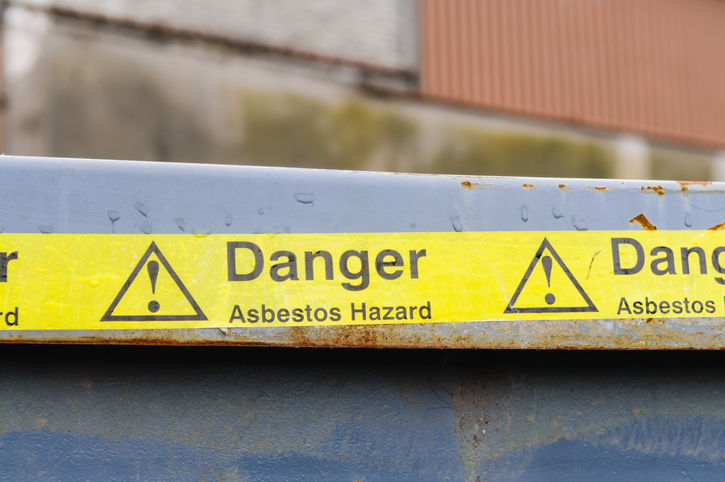Lauren Walker, a Senior Associate in our Real Estate team, sets out a short summary in relation to the duty to manage asbestos.
The Need for protection
Asbestos is the common name given to a collection of minerals that were used extensively throughout much of the twentieth century by the construction industry for the protection of buildings against heat, fire and sound. During the 1960s the medical profession started to become aware of the health problems associated with its use in buildings and it is now recognised as one of the most significant health hazards in the world. It is now illegal to use asbestos in the construction or refurbishment of any premises but any buildings built or refurbished before the year 2000 may contain asbestos.
When asbestos is disturbed or damaged fibres are released into the air which, if inhaled, can cause lung and other diseases. The use of asbestos in buildings is now illegal but significant amounts remain in existing buildings.
Duty to manage
The Control of Asbestos Regulations 2012 (CAR) establish a duty to manage asbestos risk in “non-domestic premises”. Regulation 4 of CAR places an obligation on the “dutyholder” to:
- Determine whether asbestos is present in a building or is likely to be present; and
- Manage any asbestos that is or is likely to be present
Non-domestic premises
There is no definition of “non-domestic premises” but they include:
- Commercial premises (offices, retail and warehousing)
- Industrial premises (factories, processing plants and garages)
- Service premises which contain members of the public (schools, hospitals, etc)
- Certain parts of residential premises including:
- In houses converted into flats – the common parts (stairs, etc)
- Garages and parking spaces not allocated to persons
- In blocks of flats – common parts (stairs, lifts, etc)
Dutyholder
The dutyholder in relation to any premises is every person who:
- By virtue of a contract or tenancy has an obligation in relation to the maintenance or repair of the premises; or
- If there is not a contract or tenancy, every person who has control of the premises
This broad definition includes all owners, landlords, tenants, licensees and potentially managing agents and maintenance contractors.
There can often be more than one dutyholder and this is frequently the case with premises that are let. Both the freehold owner and the tenant can be dutyholders even where the lease provides for the tenant to have responsibility for the maintenance and repair of the whole of the premises.
Where there is more than one dutyholder, the relative contributions made in complying with the regulations are determined by the “nature and extent of the maintenance and repair obligations” of each dutyholder.
Duty to assess
The dutyholder must conduct a “suitable and sufficient” assessment to ascertain whether asbestos or asbestos-containing material is, or is liable to be, present at their premises.
In making the assessment the dutyholder must take such steps as are reasonable in the circumstances but in most cases this will involve the dutyholder commissioning an asbestos survey prepared by a suitably qualified surveyor.
Managing the risk
Where asbestos is present or is likely to be present the dutyholder must ensure that:
- A determination of the risk from the asbestos is made
- A written plan is prepared to identify those parts affected
- The measures to be taken for managing the risk are specified in the written plan
Written plans usually set out any issues in respect of any asbestos found in a building, as well as identifying these issues as requiring immediate action, recommended actions to be taken (which are less urgent) or no action required due to the asbestos containing material being in good condition.
Landlords and tenants
Leases often oblige tenants to be responsible for the maintenance and repair of the whole of a building and to comply with statutory requirements in which case the tenant will be a dutyholder and will need to assess the risk of asbestos being present and prepare the written plan for its management. The landlord will also be a dutyholder and whilst it may be satisfied that its obligations are complied with by inspecting and maintaining a copy of the tenant’s survey and management plan the landlord must be prepared to step in if the tenant is in breach of its obligations.
With multi-let properties and buildings where the landlord is responsible for an element of the maintenance and repair (for example structural repairs) the landlord will have the responsibility of arranging an asbestos survey for the parts it is responsible for and copies should be provided to the tenants.
If you need any further information or advice, please do not hesitate to contact our Real Estate Team.

